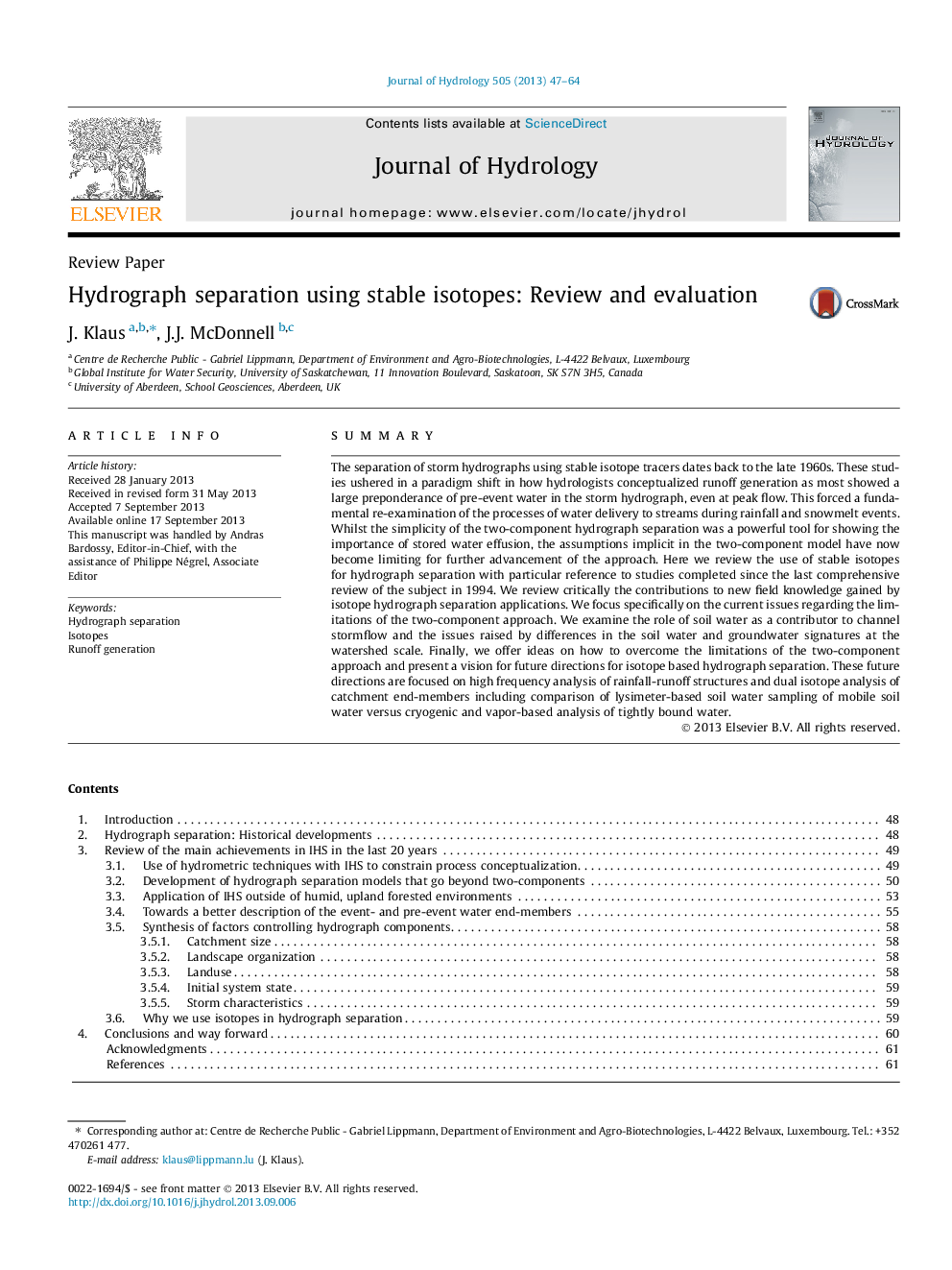| کد مقاله | کد نشریه | سال انتشار | مقاله انگلیسی | نسخه تمام متن |
|---|---|---|---|---|
| 4576149 | 1629943 | 2013 | 18 صفحه PDF | دانلود رایگان |

• We reviewed isotope hydrograph separation studies.
• We examine methods, applications, and limitations.
• We summarize factors that control the event/pre-event water contributions.
• We outline new possible research avenues in isotope hydrograph separation.
SummaryThe separation of storm hydrographs using stable isotope tracers dates back to the late 1960s. These studies ushered in a paradigm shift in how hydrologists conceptualized runoff generation as most showed a large preponderance of pre-event water in the storm hydrograph, even at peak flow. This forced a fundamental re-examination of the processes of water delivery to streams during rainfall and snowmelt events. Whilst the simplicity of the two-component hydrograph separation was a powerful tool for showing the importance of stored water effusion, the assumptions implicit in the two-component model have now become limiting for further advancement of the approach. Here we review the use of stable isotopes for hydrograph separation with particular reference to studies completed since the last comprehensive review of the subject in 1994. We review critically the contributions to new field knowledge gained by isotope hydrograph separation applications. We focus specifically on the current issues regarding the limitations of the two-component approach. We examine the role of soil water as a contributor to channel stormflow and the issues raised by differences in the soil water and groundwater signatures at the watershed scale. Finally, we offer ideas on how to overcome the limitations of the two-component approach and present a vision for future directions for isotope based hydrograph separation. These future directions are focused on high frequency analysis of rainfall-runoff structures and dual isotope analysis of catchment end-members including comparison of lysimeter-based soil water sampling of mobile soil water versus cryogenic and vapor-based analysis of tightly bound water.
Journal: Journal of Hydrology - Volume 505, 15 November 2013, Pages 47–64